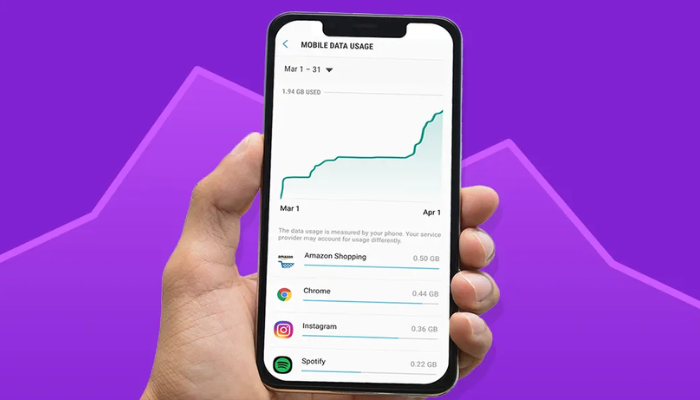Mobile data powers almost everything we do on our phones — maps, music, video and messaging. But if you’re unsure where your allowance disappears to, you’re not alone. We’re going to tell you what counts as data usage, show quick ways to check your usage, and give practical tips to keep costs down without losing the apps you love.
What uses the most data?
Most data is eaten by apps that stream audio or video, sync files in the background, or download large updates. Typical high-consumption items include:
- Video streaming (YouTube, Netflix, Showmax) — highest usage.
- Music streaming (Spotify, Apple Music) — medium, depends on quality.
- Social media (especially autoplay video and Stories).
- Cloud backups and photo syncing (Google Photos, iCloud).
- App updates and downloads.
- Online gaming and live-streaming.
How to check your data usage
Knowing how much you use is the first rule of data usage. You can:
- Check your mobile provider’s app or online portal for the most accurate billing-period usage.
- Use your phone’s built-in data monitor (Settings → Mobile Data / Cellular).
- Set a monthly data cycle and limit in your phone settings to get alerts before you run out.
Quick actions to reduce data right now
If you need to cut usage fast, try these immediate moves:
- Switch streaming to a lower quality (480p or “Data Saver” mode).
- Turn off mobile data for specific apps that use background data.
- Disable auto-play for videos in social apps.
- Pause automatic app updates on mobile and update only on Wi‑Fi.
- Download playlists, podcasts or maps over Wi‑Fi before you go offline.
Smart settings that reduce data usage without much effort
Make these changes once and you’ll save data steadily:
Use Wi‑Fi intelligently
- Connect to trusted Wi‑Fi networks whenever available and set your phone to prefer known networks.
- Set automatic backups and app updates to occur only on Wi‑Fi.
Control background data and sync
- Restrict background data for apps you rarely use.
- Adjust sync frequency for email, social and cloud apps (e.g. fetch less often).
Manage streaming habits
- Choose SD or “low” quality for everyday listening or viewing; use HD only when necessary.
- Use offline mode for music and video apps to save repeated data use.
Reduce browsing and image data
- Use browser data‑saving mode or a text‑friendly reader where available.
- Turn off image-heavy features in apps (auto-load images or GIFs).
Tips for long-term data savings
- Pick the right mobile plan: estimate your monthly use and align it to your bundle size.
- Use data-monitoring apps to track consumption by app and by day.
- Look for bundles that include streaming or social data caps if you use those services a lot.
- Be mindful of roaming: switch off data roaming or buy a local bundle when travelling.
When to upgrade your plan
If you constantly run out of data despite following these tips, consider:
- Moving to a larger monthly bundle.
- Adding an overflow or top-up option for occasional heavy months.
- Choosing a plan with free (zero-rated) services relevant to you.
Where data matters most
- For commuters: download podcasts and playlists on Wi‑Fi before you travel.
- For students: set lecture recordings and large files to sync on Wi‑Fi only.
- For families: set data limits per device and use parental controls to stop background updates.
Final checklist — manage your data in 10 minutes
- Open your provider app and check month-to-date data usage.
- Turn off auto-updates over mobile.
- Reduce streaming quality in your music and video apps.
- Restrict background data for the top five data‑hungry apps.
- Enable data‑saving mode in the browser and apps where available.
- Schedule backups and syncs for Wi‑Fi only.
- Set a data‑usage warning in your phone settings.
- Consider a larger bundle if you regularly hit your limit.
Frequently Asked Questions
How do I know which app is using the most data?
Check your phone’s data usage screen — it lists apps by data consumed. For billing accuracy, compare with your provider’s usage report.
Is streaming music less costly than streaming video?
Yes. Music at standard quality uses far less data than video, especially HD video.
Can I save data without turning off features I need?
Definitely. Use lower streaming quality, restrict background sync, and download content on Wi‑Fi to keep functionality while saving data.
Need a plan that matches your usage? Check our LTE and 5G packages and find the right allowance for your needs. We’ve got options for everyday users, students and families.















